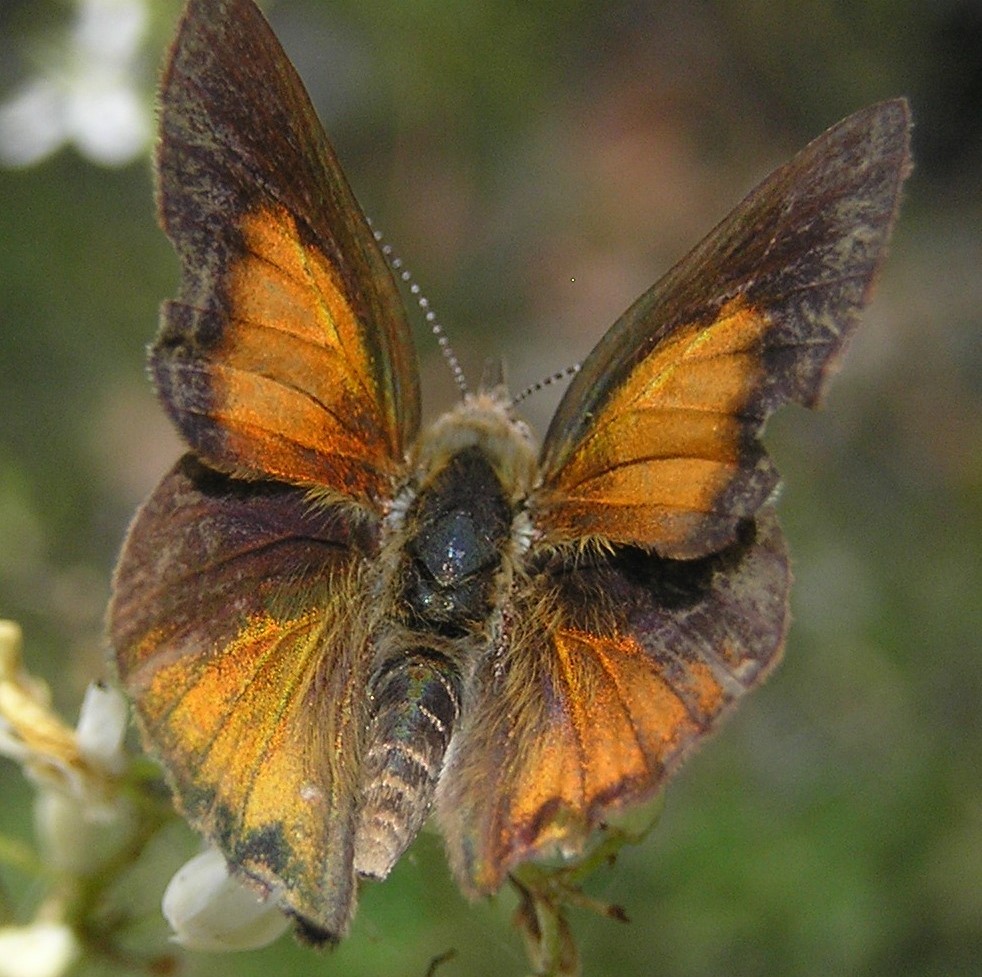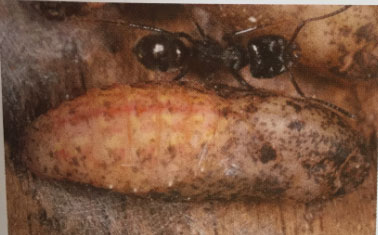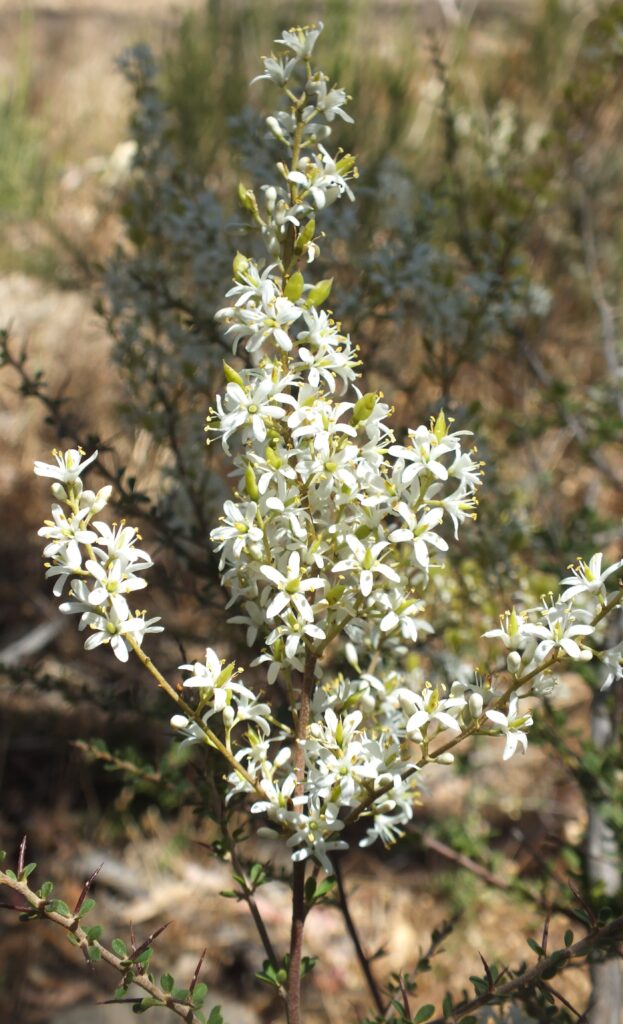Wetland Revival Trust have developed a Fact Sheet on ‘How to Search for ECB’ which you can download here.
In order to protect Eltham Copper Butterflies (ECB) you must first know where they are. ECB are believed to be very loyal to an area, even returning to the Sweet Bursaria plant they hatched on. They rarely move more than 150m from a habitat patch. Knowing where ECB populations are means they can be protected from threats.
Flying adult ECB are much easier to find than their other life forms. There are four stages in the metamorphosis of butterflies: egg, larvae (caterpillar), pupae and adult. As they are totally dependent on Sweet Bursaria plants it is easier to find the plant then look for the butterfly.



First find the Host Plant (Sweet Bursaria) to find ECB – searching for Sweet Bursaria
To find an adult ECB you must first find the host plant, Sweet Bursaria (Bursaria spinosa). The Notoncus ant species also has to be present but these are very difficult to identify. Even if these two factors are present, only 3-26% of these areas support ECB. The reason for this is unknown.
Given the difficulty of locating and identifying ant species, areas of dense Bursaria patches are used as indicators of good habitat. From our experience a ‘good potential ECB habitat’ is one that has 20-100 plants in a 50x50m area, extending over 100m or more. These patches are often peppered through larger areas, each patch maybe
supporting 2-50 ECB adults (for example Kalimna Park, Castlemaine). Bursaria density maps have been produced for many known or potential new locations, so that ECB searches are more focussed.

Time of year to search for ECB
ECB adults emerge mainly during the months of October til January each year. Some regions there may also be a smaller emergence of adult in March and April. The timing of the butterfly’s emergence from their caterpillar form is triggered by warm weather. The best time to look for them is from end October til end of December (numbers usually peak in late December- early Jan). An area has to be searched up to four times over the flying period to increase your chances of seeing them.
Time of day and weather to search for ECB
They are solar powered so during these months they can only be seen when it is hot (>20 to <30°C), sunny, still days. On a dull, windy or rainy day they will be trying to disguise themselves from predators, hanging upside down under a leaf, in a dull flowerhead etc.
Correctly Identifying ECB
To correctly identify Eltham Copper Buttefly us the ‘ECB Look-a-like sheet’, Butterflies Australia App or Butterfly Field Guide. They are frequently confused with other species. Note both upper and lower wing patterns
What You Need
- ‘ECB Look-a-like sheet’ to help you identify ECB from similar species.
- Your field gear: binoculars, good sturdy shoes, sun protection gear, snake bite bandage, first aid, water.
- A Fairy Wand (a stick)!
- Camera
- Phone (with location turned on if you want to GPS your find)
- Binoculars – optional
Method to Search for ECB Flying Adults
Carefully “wander” through dense Bursaria areas taking care not to trample vegetation or any small recruiting Bursaria plants. Pick a route so that you minimise double counting. Use a stick (the fairy wand) to gently tap Bursaria plants and other shrubs to get the ECB to fly, thereby increasing your chances of seeing one (they will flutter up in the air).
ECB are hard to see and weather/season dependent, so it is recommended that each area is checked four times during ideal conditions over the flying season to be confident of presence/absence.
Validating your Findings:
Validate your sightings. If possible, take a photograph of the ECB you find. Record your location with your phone. Send in your photo with your data to the Butterflies Australia APP or in the contacts page.
Keep a record of date, time of day, temperature and note if Bursaria or other plants are flowering.
Recording Data for each ECB Sighting
Submit your records onto Butterflies Australia App (https://butterflies.org.au) or iNaturalist (https://www.inaturalist.org).
Record ECB behaviour
There is very little butterfly or insect research being carried out in Australia currently. Much of our knowledge including 80% of museum butterfly specimens comes from hobbyists and amateurs. So take note of ECB behaviour and submit with your records. Help build the knowledge base for this and any other species.
For example did you know that Andrea Canzano studied ECB and found that ECB females live a max of 11 days, and males a 28 days (Canzano unpublished). Females emerge later than males and live for a shorter period. Males main focus is to defend a territory and search for a mate. Females generally mate shortly after they emerge then they search for a location to lay eggs. Andreaa also found you are much more likely to see males than females. You Many females of the Blue butterfly family use spurs on their feet to pierce leaves to ensure they are nutritious and to detect the presence of Notoncus ant pheromones. It is believed that female ECB do not venture far from pupal plant.